In our last blog, we wrote about behavioural biases and how they can affect us all as investors by pulling us off course if we succumb to their siren call.
Let’s face it, if we wanted to, we could find plenty of reasons in the 24 hour news feeds every day to sell our holdings in the great companies of the world but this is exactly what we should not do.
The market timing and selection culture is a dominant force in the investing industry; a significant part of our value is in helping you to stay the course and ignore the noise.
As advisers, it is important that we have robust processes in place so that our personal behavioural biases do not affect your investment experience with us.
We recognise we have been entrusted to look after years of hard work and sacrifice that you have made for your own future and, in many cases, for future generations of your family.
Maintaining a constant watch on our investment portfolios and the funds that are used in their construction is a crucial part of the work that we do so we wanted to share the process and results of our most recent review.
Selecting best-in-class funds from a whole-of-market universe
We believe that investment decisions should be guided by the wealth of academic and empirical evidence available to us. The evidence provides clear pointers to where we should focus our energies to deliver a successful investment experience. This includes guidance in the way in which funds are selected to deliver returns and risk appropriate for each specific client.
Because we are independent financial advisers, we start with the whole-of-market universe of products including all investment funds, Exchange Traded Funds (ETFs) and investment trusts. The sheer number of funds requires quantitative screening to narrow the options down to a manageable short-list.
The selection of the asset classes to include in the portfolios is also determined by academic and empirical evidence, for example for growth assets in the portfolios, we seek to capture returns from the broad equity market (in simple terms, the great companies of the world) and supplement this smaller companies and so called ‘value’ stocks exposure.
We have screening criteria for each asset class that we seek to capture returns from, and use proprietary software to run the screens.
The process in summary
In essence, we seek to use funds that have the best likelihood of delivering as much of the return offered by the market as possible.
In essence, we seek to use funds that have the best likelihood of delivering as much of the return offered by the market as possible.
The figure below provides an overview of the screening process.

Specific selection criteria
A number of quantitative screens are used to establish a fund short-list; some of the more important screens are shown below: –
Ongoing fund charges
This is a useful starting point. Research by Morningstar (Morningstar (2010), How Expenses and Stars Predict Success) identifies that charges are a better predictor of future performance than even their own ‘star’ rating system.
“If there’s anything in the whole world of mutual funds that you can take to the bank, it’s that expense ratios help you make a better decision. In every single time period and data point tested, low-cost funds beat high-cost funds.”
Tracking error
The degree to which a fund varies from its benchmark provides an insight into the active risk that exists in the fund. Higher active risk gives the opportunity for market-beating returns but also risks underperformance. The empirical evidence is weighty in favour of avoiding tracking error risk and generally high tracking error funds will be excluded.
Fund size
Fund size is an important component of the product decision. Small funds can be more vulnerable to entry and exit by larger investors and carry the risk that the fund is uneconomic and may not survive.
Generally a minimum size of £100M is required.
Broad diversification
It is often said that diversification is the only free lunch in investing. Highly diversified funds are preferred to ensure that the fund avoids concentration risks and increases the chances of achieving a market return.
Bond funds – credit rating & duration
High credit quality government bonds are favoured although products that hold investment grade corporate bonds may be acceptable in some circumstances. No high yield or emerging market bonds are included.
Shorter duration bond funds are favoured to avoid unnecessary and potentially unrewarded price volatility.
Due diligence on best-in-class products
The remaining funds form part of the best-in-class cohort that are then subject to further screening.
Deep insight into each of the products comes from detailed and methodical due diligence that is undertaken before any product is recommended. Product surprises are simply not acceptable to us or our clients.
Sign-off and monitoring
Our Investment Committee (comprising Dom, Jon, Dan and a retained external specialist) meets regularly to review a broad range of risks and other investment issues that impact on client portfolios and to reaffirm or refine our robust investment process over time.
All meetings are recorded in formal minutes and decisions to either include or exclude products from the best-in-class product set are reviewed, debated and either approved or rejected.
Fund screens are run at least once a year to ensure that any new and potentially best-in-class funds are captured in the review and assessment process.
Individual funds are benchmarked against their stated benchmarks; this forms an integral part of the ongoing monitoring of the best-in-class product cohort.
Keeping an open mind and being prepared to challenge our approach
Our process is a systematic, evidenced-based approach to investing which, from a fund selection process, identifies low cost, low turnover and low tracking error asset class funds as a sensible way to invest client monies.
Our process is a systematic, evidenced-based approach to investing
The funds seek to capture the rewards on offer from the markets as efficiently as possible. Our governance process provides a regular review of the latest evidence and we are open to challenge if faced with new evidence.
Summary of the Spring 2017 review
We noted that there were some new funds dropping through the fund filters this year which required further investigations.
We also noted that several funds had reduced their on-going charges, including the Vanguard funds that we use in our portfolios and of course these cost savings are passed on in full to our clients.
There are still no investment grade bond funds meeting our criteria and despite there being some new funds in other ‘best in class’ cohorts we found no compelling reasons to replace any of the funds that we currently use.
Rest assured we will maintain our constant oversight of all matters relating to the portfolios and funds used in their construction as we understand how important this is to our clients.
We thank you for entrusting us to your and your families futures. If you have any questions or wish to talk to us about your portfolio please don’t hesitate to get in touch.
If you have a friend, family member or colleague who you think might benefit from our approach, or who might like a second opinion on their portfolio, please do introduce them to us.
Until next time.


